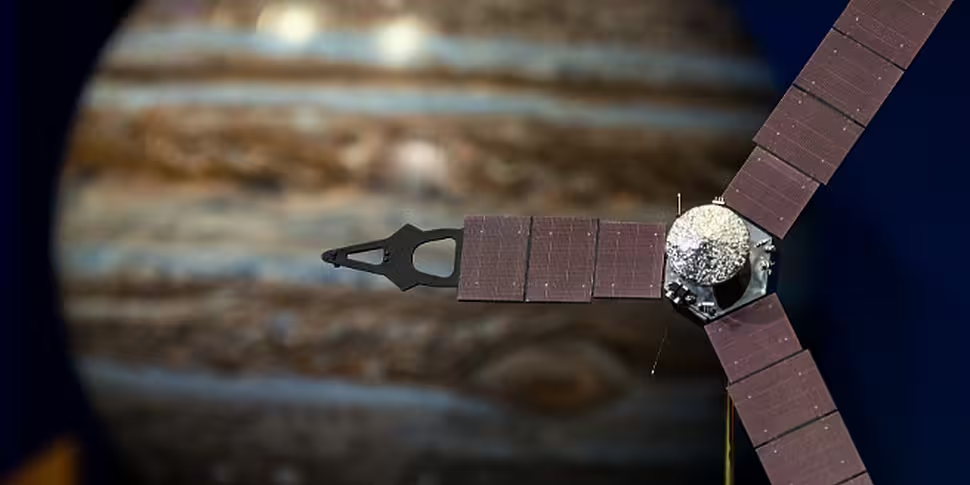NASA’s spacecraft, Juno, has almost completed its five-year journey to Jupiter. The probe was launched on August 5th 2011 and is expected to reach its destination in the early hours of the morning (4:30am GMT).
As Juno approaches Jupiter, it is travelling at more than 241,000 km/h, making Juno one of the fastest man-made objects ever built.
The spacecraft has travelled almost 2.8 billion kilometres. Juno must enter a polar orbit before it can begin studying Jupiter.
Space commentator, Leo Enright, spoke to Jonathan Healy on Lunchtime today.
“I was in Cape Canaveral when it left earth five years ago," he said.
"It was the fastest object ever flung out from earth. It was quite spectacular to watch the spacecraft leave the planet. This arrival today will be, in many ways, more spectacular because they’ve got to kill all that energy. They’ve got to slow down and get themselves into orbit tonight.”
The spacecraft has one chance to succeed in time to enter orbit. The probe will be subjected to extremely high levels of radiation. On Earth we are exposed to 0.38 RAD. The expected level on Jupiter is 20,000,000 RAD. If Juno succeeds it will then stay in orbit for 18 months and begin studying magnetic fields and gravitational fields.
Jupiter remains a largely unexplored planet due to its harsh conditions. Although a number of probes have been sent to Jupiter before, these missions were focused on studying the planets numerous moons. This mission is specifically looking at the planet itself and could answer important questions such as whether it has a solid or gas core.









